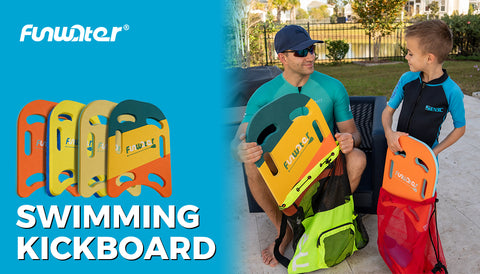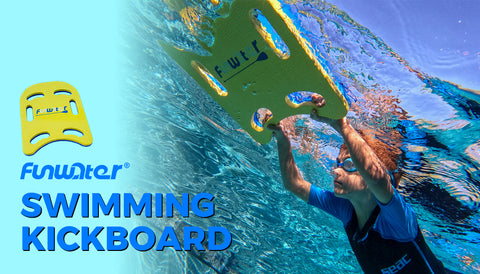Mastering the Art of Swimming with a Kickboard: Your Ultimate Guide
Diving into the world of swimming offers many benefits, and for beginners and experienced swimmers alike, a kickboard is an indispensable tool. In this comprehensive guide, we'll explore the realm of swimming kickboards – from their purpose and benefits to techniques for a more efficient kick and a smoother swim.
Swimming Kickboards
A swimming kickboard is more than just a buoyant foam block – it's a tool that can help transform your swimming experience. Whether you're a beginner or an experienced swimmer, using a kickboard can aid in refining your kicking technique, enhancing your leg strength, and fostering greater confidence in the water.

Benefits of Using a Kickboard
Using a kickboard offers a range of advantages:
- A swimming kickboard isolates your lower body, allowing you to concentrate on improving your kick without worrying about your arm movements.
- Holding onto the kickboard keeps you afloat, making it an excellent aid for beginners who are still building water confidence.
- Incorporating kickboard drills into your swim routine helps develop leg strength, endurance, and proper kicking mechanics.
- By keeping your upper body stable while using a kickboard, you can work on maintaining a horizontal body position in the water.

Types of Kickboards
There are different types of swimming kickboard catering to various needs:
Standard Kickboards
These traditional kickboards are rectangular foam blocks that swimmers hold onto while kicking. They are versatile and suitable for various kicking drills.
Hybrid Kickboards
Hybrid swimming kickboard come with additional features like hand grips or cutouts for increased comfort and variations in hand placement.
Junior Kickboards
Designed for young swimmers or those with smaller frames, junior kickboards offer a better fit and enhanced control for smaller hands.

Getting Started with a Kickboard
Using a kickboard is simple:
- Hold Onto the Kickboard: Grasp the kickboard with both hands, positioning it in front of you while extending your arms.
- Kicking Motion: Start kicking your legs while holding the kickboard steady in the water.
- Breathing: Breathe generally by turning your head to the side during kicks.
Perfecting Your Kick Technique
Different swimming styles require distinct kicking techniques. Here are two fundamental ones:
Flutter Kick
The flutter kick is a rapid, alternating motion where your legs kick up and down. Your feet should remain relatively close together, with slight knee bends and flexible ankles.
Breaststroke Kick
For breaststroke, execute a whip-like motion where your legs move out and around in a circular path. The kick involves a simultaneous outward movement, a squeeze, and a recovery motion.

Pro Tips for Effective Kickboard Use
- Allow your upper body to remain stable and relaxed while kicking. Keep your core engaged to maintain proper body alignment and prevent your lower body from sinking.
- Alternate between fast and slow kicks to work on different muscle groups and improve kicking versatility.
Caring for Your Kickboard
To ensure your swimming kickboard's longevity:
- After each swim, remove chlorine or salt from your kickboard with clean water.
- Store the kickboard in a cool, dry place away from direct sunlight.
Safety Measures in the Pool
Prioritize safety when using a kickboard:
- Swim in areas designated for swimming kickboard use to avoid colliding with other swimmers.
- Be aware of your surroundings and other swimmers in the pool.
Taking Your Swimming Skills to New Depths
Incorporating a FunWater swimming kickboard into your swim routine can elevate your skills. Whether aiming for improved technique, more muscular legs, or enhanced overall performance, the kickboard is a versatile tool to help you reach your aquatic goals.
























































































































































Leave a comment